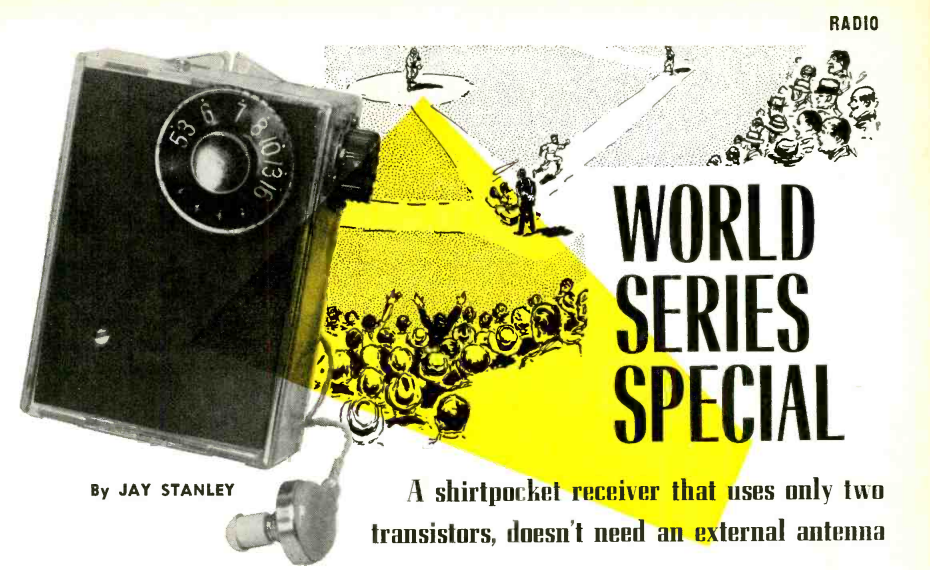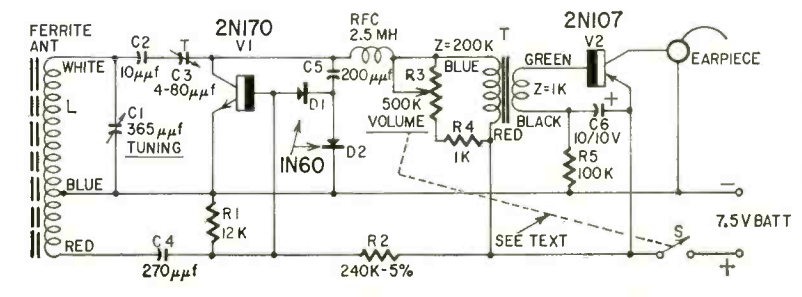 The plans for this 2-transistor pocket portable receiver appeared in Radio-Electronics magazine 60 years ago this month, September 1960. The circuit was the result of prodding from the author’s son to produce a pocket radio in time for the World Series, hence the name of the set, the World Series Special.
The plans for this 2-transistor pocket portable receiver appeared in Radio-Electronics magazine 60 years ago this month, September 1960. The circuit was the result of prodding from the author’s son to produce a pocket radio in time for the World Series, hence the name of the set, the World Series Special.
The author noted that pocket portable typically came in two categories–they were either superhets that were difficult and expensive to build, or else simple one or two transistor sets that wouldn’t pull in anything without a 50 foot outdoor antenna. This set was a good compromise, since it would pull in the strong local stations (presumably including the one that was broadcasting the World Series) without an external antenna.
The circuit had a regenerative RF stage, followed by a crystal detector. That was followed by two stages of audio amplification. It used two transistors, the venerable 2N170 NPN, and the 2N107 PNP. The 2N170 was reflexed to serve as both RF amp and first AF stage. The 2N107 was the final audio transistor. The article stressed the importance of using a good earpiece, since a sensitive one would have much better volume. Regenration was fixed, and there was a separate volume control. It was powered with a 7.5 volt mercury battery that was soldered in place, since the author apparently had faith in his son to turn the radio off when not in use.
The author noted that layout was not critical, with one exception: It was important to keep the battery as far away as possible from the antenna coil.

